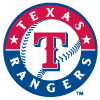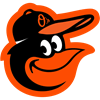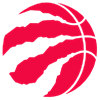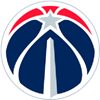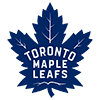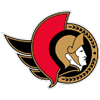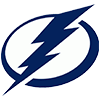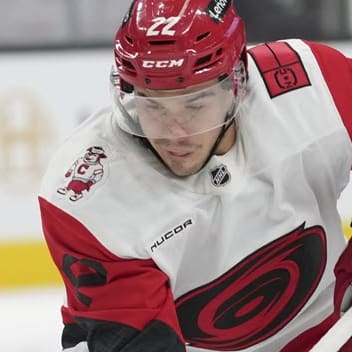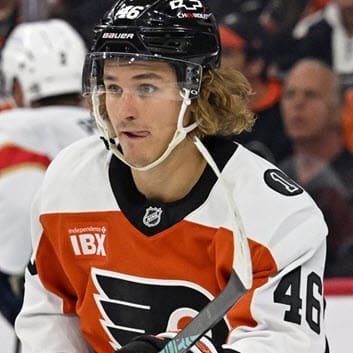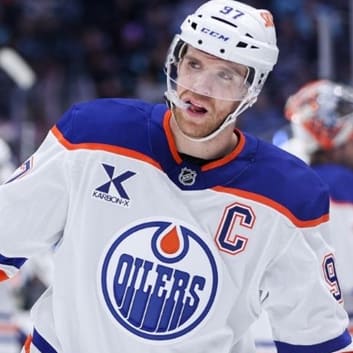Much like the NFL, NBA, and MLB, interest in NHL prospects and young, up-and-coming players is at an all-time high. Organizations seeking to rebuild their teams have increasingly focused on stockpiling draft picks and figuring the rest out later.
The players listed below won't all be NHL regulars, or even sign with the team that drafted them, but they'll all, at a minimum, serve as valuable currency to make deals with other organizations down the line. Forget Connor McDavid ($12.5 million) or Sidney Crosby ($8.7 million), the most valuable asset in today's NHL is a regular contributor on an entry-level contract. If that player is a star, all the better. It provides general managers with unmatched flexibility to construct the remainder of their roster.
With that in mind, this is the first of a two-part series covering our annual rankings of the top-100 prospects in the NHL. In addition, we will have a four-part series in September, broken down by division, covering the top prospects of all 31 NHL organizations.
(Note: players with 25 or more games of NHL regular-season experience are not eligible for this list)
51) Isac Lundestrom (LW-ANA): It was a strange season for Lundestrom. He began the year in Anaheim before being loaned back to his club team in Sweden, only to finish the year in the AHL. Lundestrom plays a mature game for a 19-year-old and appears to be just about ready for full-time NHL duty. While his long term role might be that of
Much like the NFL, NBA, and MLB, interest in NHL prospects and young, up-and-coming players is at an all-time high. Organizations seeking to rebuild their teams have increasingly focused on stockpiling draft picks and figuring the rest out later.
The players listed below won't all be NHL regulars, or even sign with the team that drafted them, but they'll all, at a minimum, serve as valuable currency to make deals with other organizations down the line. Forget Connor McDavid ($12.5 million) or Sidney Crosby ($8.7 million), the most valuable asset in today's NHL is a regular contributor on an entry-level contract. If that player is a star, all the better. It provides general managers with unmatched flexibility to construct the remainder of their roster.
With that in mind, this is the first of a two-part series covering our annual rankings of the top-100 prospects in the NHL. In addition, we will have a four-part series in September, broken down by division, covering the top prospects of all 31 NHL organizations.
(Note: players with 25 or more games of NHL regular-season experience are not eligible for this list)
51) Isac Lundestrom (LW-ANA): It was a strange season for Lundestrom. He began the year in Anaheim before being loaned back to his club team in Sweden, only to finish the year in the AHL. Lundestrom plays a mature game for a 19-year-old and appears to be just about ready for full-time NHL duty. While his long term role might be that of a highly productive third-liner, Lundestrom has enough offense in his game to fill a top-six role, at least temporarily. The Ducks have a boatload of youngsters on the verge of cracking their lineup (Sam Steel, Troy Terry, Maxime Comtois, etc.) and there won't be room at the inn for all of them right away, so Lundestrom will need a strong training camp in order to make the team this fall. He's a high-floor prospect.
52) Joe Veleno (C-DET): Veleno plummeted to the 30th overall selection in the 2018 draft despite the fact that he had some late buzz as a potential top-10 pick. A little over a year later, Detroit looks brilliant for having nabbed him at that spot. Veleno's slide was reportedly due to a perceived lack of upside around the league. He finished this past season with 42 goals and 104 points in 59 contests for QMJHL Drummondville while being named to the league's First All-Star team. Veleno is a crafty, talented center who thinks the game extremely well. He goes about his business in a quiet, understated fashion and has remained a productive player throughout his time in the "Q", all while scouts were ripping his game apart six ways from Sunday. Veleno might not be a perennial All-Star, but he has the look of a productive second-line center who can impact a game in a variety of ways. In other words, a potential steal for the second-to-last selection of Round 1.
53) Philip Broberg (D-EDM): Enamored by Broberg's tantalizing speed and ability to carry the mail through the neutral zone at the drop of a hat, the Oilers selected him eighth-overall this past June and signed him to an entry-level deal just two weeks later. I had Broberg ranked No. 15 on my board, so I felt it was a slight reach, but I can acknowledge that there is definitely a scenario in which the Swede becomes one of the better players to emerge from the recently completed draft. My biggest knock on Broberg is his decision making with the puck. I think there's a bit more offense to his game than most, but his tendency to force plays without considering all of his options is an issue that needs correcting. Broberg's foot speed alone should make him a top-four defenseman and his ceiling is considerably higher than that if he can cut down on the mistakes. My guess is that Edmonton loans him back to his club team in Sweden for one more season. However, he'll almost certainly be playing in the NHL by the fall of 2020.
54) Spencer Knight (G-FLA): Before he was drafted 13th overall by Florida this past June, I went on the record and stated that I believed Knight was, and is, the best goaltending prospect since Ilya Samsonov, who went 22nd overall to Washington in 2015. That doesn't mean I would have selected him as high as the Panthers did, but I definitely believe in his ability. Knight is big (6-foot-3, 195 pounds), athletic, and remarkably calm in net. He lets the puck come to him and rarely gets caught out of position. The maturation and development of goaltenders is notoriously fickle, but Knight has all the ingredients that you want in a potential franchise netminder. The Panthers just handed Sergei Bobrovsky a seven-year, $70 million contract, so they can afford to be patient with Knight, but if he's as good as I think he is, I could see him turning pro after just one season at Boston College, or two at the very most. Knight should be a lock to be Team USA's starting goaltender at the World Junior Championship this coming December.
55) Rasmus Sandin (D-TOR): Sandin landing with Toronto in the 2018 draft (29th overall) surprised no one. Leafs general manager Kyle Dubas spent three seasons in the Sault Ste. Marie (OHL) Greyhounds' front office and that's the program Sandin played his junior hockey with. Although he was eligible to return to the OHL this past season, Toronto aggressively pushed Sandin to the AHL, and he responded with a fantastic performance (28 points in 44 games) despite being one of the league's youngest players. The Swede looked comfortable from the very start and got increasingly better as the campaign progressed. Blessed with exceptional mobility and hockey IQ, Sandin is ready to help the Leafs right now. Dubas and President Brendan Shanahan reportedly refused to include the Swede in any potential trade last season and it's easy to see why. 19-year-old defenders who possess the reliability of Sandin are few and far between.
56) Jason Robertson (LW-DAL): A November trade from Kingston (OHL) to Niagara didn't slow Robertson down. In fact, his play improved. It improved so much that the 2017 second-round selection (39th overall) ended up winning the OHL Scoring Championship, posting 48 goals and 117 points in 62 contests. Robertson also had a strong showing (seven points in seven games) for Team USA at the World Junior Championship. As has been the case since he was drafted, the biggest concern surrounding Robertson is a lack of foot speed. He thinks the game well, and is talented enough to avoid situations which force him to rely on his feet, but concerns regarding how Robertson will fare in the fast-paced NHL are legitimate. His transition to professional hockey this season will be a major story line for prospect enthusiasts to keep an eye on.
57) Bode Wilde (D-NYI): Wilde is another player who saw his stock crater in the 2018 draft (41st overall) despite being viewed as a consensus first-round talent by scouts. After flirting with the option of going to college, Wilde instead decided to join OHL Saginaw, posting 19 goals and 70 points in 62 games, which was good enough to rank him third among OHL defensemen in scoring. Wilde's world-class offensive abilities have been on display for quite a while, but his decision making with the puck has been questioned. However, he appeared to improve in that area this season. It's still not perfect, but it's better. Wilde is the type of player who has to have the puck on his stick a lot in order to be successful, so mistakes are going to happen. As long as he can keep his mental errors to a minimum, I love his chances of effectively running an NHL power play in the not too distant future. Wilde should begin this coming season in the AHL.
58) Jeremy Bracco (RW-TOR): Here's a question for you - Name the 22-year-old who finished second in both assists (57) and overall AHL scoring (79 points in 75 games) this past season? That's Bracco, of course. The undersized offensive dynamo is fresh off a dominant and shocking coming out party for the AHL's Marlies. Bracco became one of the league's most lethal power-play specialists and made countless highlight reel passes throughout the course of the year. He isn't particularly quick, but he has great edges and excels in open space. Check out the clip below which highlights Bracco's ability to open up his skates and glide around the offensive zone to assess his passing options.
The Jeremy Bracco show. pic.twitter.com/s8yWfvlYyu
— Kevin Papetti (@KPapetti) May 8, 2019
To summarize, he's ready to help the Leafs right now. The only issue is Bracco is limited to right wing and there doesn't appear to be an opening for him with the big club at the moment. I've been higher on Bracco (a fellow Long Islander) than most for quite some time but even I didn't see this outburst coming. He's so good with the man advantage that I'd be very surprised if he doesn't eventually develop into, at minimum, a league-average offensive option, and it could happen as soon as this coming season.
59) Serron Noel (RW-FLA): The improvement in Noel's game over the past year has been remarkable. When he was selected in the second round by Florida in 2018 (34th overall), Noel was simply a big body (6-foot-5) with a good set of wheels. Players his size should not be able to weave through opposing defenders like this:
Serron Noel does a cool thing. gif pic.twitter.com/K2PYaNjD5I
— J.D. Burke (@JDylanBurke) April 17, 2019
Noel has done an excellent job of refining the smaller parts of his game since then. He scored 34 goals in 68 games for OHL Oshawa this past season while chipping in a career-best 47 assists. Noel's size and speed give him a high floor as a useful role player, but the upside is there for considerably more. He's a brilliant athlete. Noel's father, Dean, played in the CFL. I'm a believer in Noel's physical gifts, but questions will remain until he proves that he can use those attributes at the professional level.
60) Akil Thomas (C-LAK): Viewed by most as a late first-round talent in the 2018 draft, Thomas inexplicably slipped to 51st overall, and a little over a year later, the Kings have another top-100 prospect in their system. Thomas finished tied for sixth in OHL scoring this past season after posting 38 goals and 102 points in 63 games for Niagara. He has the skill to play on the power play and the defensive awareness to kill penalties. He also makes a difference physically despite having nothing more than average (6-feet, 180 pounds) size. Thomas is just a really solid all-around player who should be ready to help Los Angeles in short order. He has the look of a multi-faceted third-line center who can play up-and-down the lineup.
61) Ryan Merkley (D-SJ): I'm worried about Merkley. Not about his talent or on-ice abilities, those are off the charts. You can't teach this:
Sharks pick Ryan Merkley pic.twitter.com/oBaAAg5tUz
— Corey Pronman (@coreypronman) June 23, 2018
I'm worried about the constant rumblings regarding his character and interactions with this teammates and coaches. Guelph (OHL) dealt Merkley to Peterborough in December and then went on to add multiple high-end pieces en route to winning the OHL Championship. None of the players they received could match the talent level of Merkley, and if they were truly hoping to compete, imagine how bad it must have been behind the scenes to trade him? Merkley led all OHL defenders in assists with 57, although he was far less effective (zero points in six games) in a late season AHL run. If Merkley can keep his head on straight, he has the potential to be one of the better offensive defensemen in the NHL. I feel ranking him here splits the difference in terms of his ability and the likelihood of him ever reaching his ceiling. Merkley -- who turned 19 years old in August -- is too young to play in the AHL, so he'll either stay with the Sharks (unlikely), or get shipped backed to Peterborough for one unnecessary final junior campaign in 2019-20.
62) Philippe Myers (D-PHI): Myers could never play another NHL game and he would have already surpassed even the most optimistic expectations. After all, he was undrafted, and those guys almost never make it to the NHL. Myers got into 21 games with the Flyers this past season, and looked decent despite getting limited ice time most nights. The 22-year-old is a massive kid (6-foot-5, 210) who can effectively manage a power play. He's also a right-handed shot. Myers gained valuable international experience at the World Championship in May as a late roster add after the Canadians lost a pair of defensemen to injury. Philadelphia would be best served to hand Myers top-four minutes at the start of this coming season. He's clearly ready for the opportunity, but new head coach Alain Vigneault isn't known for his patience with younger players. The worst thing the Flyers could do is dress Myers and have him play just nine or ten minutes per night. They need to live with his mistakes.
63) Ryan Suzuki (C-CAR): Arguably a top-ten talent in this past June's draft, Suzuki ended up paying the freight for playing for a poor Barrie (OHL) team. His effort level and body language weren't great at times, but no one is doubting Suzuki's ability. He's a brilliant playmaker, and his overall numbers for the Colts were more than respectable (50 assists, 75 points in 65 games) given the lack of talent he was surrounded with. If Suzuki's mediocre season was simply the result of a bad set of circumstances, and I believe that's likely the case, Carolina got a steal at No. 28. The 18-year-old needs to play with a bit more grit and be willing to go to the difficult areas of the ice to make a play, but I would bet on his talent six days a week, and twice on Sunday.
64) Victor Olofsson (RW-BUF): Originally a seventh-round selection (181st overall) of the Sabres in 2014, Olofsson's first season in North America could not have gone any better. He notched 30 goals and 63 points in 66 games during his first AHL campaign and chipped in four points in a brief six-game trial with Buffalo. The emergence of Olofsson allowed the Sabres to ship Alexander Nylander to Chicago this summer. The Swedish winger has nothing left to prove in the minors, although I'm worried Buffalo's offseason acquisitions of Marcus Johansson and Jimmy Vesey may result in the 24-year-old beginning next season right back in Rochester. There's 55-to-60 point, top-six upside here, but Olofsson may not get a real chance to display his abilities in the NHL until 2020-21.
65) Moritz Seider (D-DET): No one, and I mean no one, including Seider himself (seriously, just check out the video below), saw the big German rearguard going sixth-overall to Detroit this past June. Seider's game is built around size (6-foot-4, 200 pounds), dependability, and physicality. He gets the puck up and out of his own zone quickly, and he skates well enough to carry the mail himself if necessary. How much offense he can provide remains an open question, but he does most everything else well. Seider spent this past season playing against men in his native Germany, and he suited up for his home country in both the World Junior Championship and senior World Championship. He should be a useful top-four NHL defender, and there's potential for more, but he's a bit behind the curve because he grew up in a non-traditional hockey market. I didn't like the selection at the time, and you'll have a difficult time convincing me otherwise given the quality forwards that were still on the board, but Detroit Executive Vice President and GM Steve Yzerman is a capable judge of talent and deserves the benefit of the doubt until proven otherwise. Seider, who has already signed his entry-level contract with the Red Wings, figures to spend this coming season in the AHL or back with his German club (Adler Manheim) in the DEL.
Love the reaction, Moritz Seider! #NHLDraft pic.twitter.com/UKAglDPdWw
— NHL GIFs (@NHLGIFs) June 22, 2019
66) Timothy Liljegren (D-TOR): Liljegren's ceiling is much, much higher than Sandin's but he also has a much smaller chance of ever reaching it. In fact, I could see a scenario in which Liljegren never even develops into a dependable NHL regular. He was banged up once again this past season and wasn't all that productive (15 points in 43 games) for the Marlies when healthy. Liljegren did, however, play a bit better (four assists in nine games) during the postseason. The 20-year-old Swede isn't known for his reliability, and there are going to be plenty of ups and downs along the way. His offensive awareness and speed are terrific, and he has a ton of value given his talent level and cheap entry-level contract, but Liljegren hasn't shown enough during his two North American campaigns to be a headliner in a trade for Toronto. It's highly likely that he makes his NHL debut at some point during the 2019-20 season, but there's a lot of work to be done before he'll be ready to help the Leafs on a full-time basis.
67) Isaac Ratcliffe (LW-PHI): The Flyers have greatly improved their prospect pool over the past several years, and the development of Ratcliffe has given the team another potential high-end offensive weapon. A massive 6-foot-6 linebacker on skates, Ratcliffe was just one of six OHL players to score 50 goals this past season. 12 of those goals came on the power play and three came shorthanded. Ratcliffe has learned how to use his big frame to his advantage over the past couple seasons and displayed great leadership qualities while captaining Guelph to the OHL Championship. Big-bodied power forwards tend to have a longer learning curves while transitioning to the professional ranks, so don't be surprised if Ratcliffe struggles a tad during his first full AHL season.
68) Victor Soderstrom (D-ARI): When it was announced that Arizona was trading up to No. 11 overall during June's draft, I assumed it would be for one of the forwards who was unexpectedly slipping. I did not expect Soderstrom to be their selection. Teams typically move up seeking ceiling as opposed to floor, but Soderstrom brings more of the latter to the table than the former. He took a regular shift in the SHL as an 18-year-old last year and looked just fine doing it, and there's definite value in a sure-fire prospect who is seemingly a lock to play in the NHL, but Soderstrom is limited offensively and brings nothing more than average (5-foot-11) size to the table. I'd be shocked if he doesn't give the Coyotes years of solid service, but I'd also be surprised if he ever turns into an All-Star. Already signed to an entry-level deal, Soderstrom will likely be loaned back to his Swedish club team in Brynas for the 2019-20 season.
69) Liam Foudy (C-CBJ): At the time, the selection of Foudy at No. 18 overall in 2018 seemed like a massive reach to me, but the pick has grown on me a bit since then. However, I still would have gone in a different direction. Don't get me wrong, Foudy has his uses. For one, he's an exceptional athlete. His father played in the CFL and his mother was an Olympic sprinter. Foudy's also one of the best skaters in the OHL. His floor is that of a useful third-line penalty killer, but I'm not entirely convinced that there's enough skill to his game for Foudy to be able to fill a top-six role. On the flip side, Foudy should be able to complement better players due to his ability to get up and down the ice in an instant. The range of outcomes here is gigantic. There are openings on the Blue Jackets' roster at the moment, so Foudy should be considered a dark horse candidate to begin the 2019-20 season in the NHL.
70) Alex Barre-Boulet (C-TB): Tampa Bay has not become one of the best organizations in the NHL by accident. They draft well and develop well, and when they see a player slip through the cracks, they pounce. That's what happened with Barre-Boulet. The 2017-18 QMJHL scoring leader and MVP, ABB was signed by the Lightning as an undrafted free agent in March of 2018.
#SYRCrunch defeat #Marlies 1-0 (OT) thanks to this beauty of a GWG from Alex Barre-Boulet. @mckeenshockey. pic.twitter.com/LHE2Zk63CC
— Jacob Stoller (@JLStoller) February 23, 2019
See the above highlight. A player with those offensive skills should never go undrafted. He joined Tampa Bay's AHL affiliate in Syracuse this past season and proceeded to lead all AHL players in goals (34) and all rookies in points (68 in 74 games) while being named AHL Rookie of the Year. An immensely gifted offensive player, the only knock on Barre-Boulet is his lack of size (5-foot-10, 170 pounds). His style of play reminds me of Johnny Gaudreau. Given Tampa Bay's high-end offensive depth, Barre-Boulet could begin his NHL career in a checking role before seizing a top-six spot down the road, but he's ready to help the Bolts' power play immediately.
71) Thomas Harley (D-DAL): Viewed by most as a middling prospect when the season began, Harley's strong play (58 points in 68 games) for OHL Mississauga pushed him all the way to the middle of the first round (18th overall) this past June. Harley is your prototypical two-way defender. He has a good set of wheels and some offensive flair. Harley's play improved as he gained confidence and was given more responsibility, and he should be one of the very best defensemen in the OHL this coming year. Harley, who turned just 18 years old in mid-August, could be ready to join the Stars in as little as two years.
72) Dante Fabbro (D-NSH): It took multiple tries, but Nashville finally got Fabbro signed in March after his junior season at Boston University concluded. He was a regular in their lineup by the time the playoffs rolled around. Fabbro was a do-it-all offensive threat at the collegiate level (33 points in 38 games this past season), but he'll likely be more of a dependable two-way guy as a professional. Fabbro is a steady, right-handed shot and clearly ready to play in the NHL. Even so, I don't think his ceiling is particularly high. I expect a decade-plus of solid, unheralded service. Think San Jose's Marc-Edouard Vlasic. Fabbro should begin the 2019-20 season as a regular on the Nashville blue line, and I could see a scenario in which he's playing 20-plus minutes by Christmas.
73) Bobby Brink (RW-PHI): Given the general lack of depth in June's draft, it's baffling that Brink -- even with his awkward skating stride and lack of foot speed -- fell to Round 2. The Flyers ended up with a consensus first-round talent (Brink was No. 20 on my board) at No. 34. NHL clubs are generally hesitant to use high draft selections on undersized players that don't possess a ton of speed, but Brink's puck skills are terrific, and his hockey sense is elite. If there was ever an exception to the rule, this is it. I'm a believer, but I acknowledge Brink's floor is non existent. He doesn't move well enough and isn't big enough to fill your traditional depth/checking role. Brink's development in his freshman season at the University of Denver will be fascinating to watch. My guess is a year from now, he'll either be a top-50 prospect or off of this list entirely.
74) Logan Brown (C-OTT): Brown played 58 games this past season, and while that would typically be nothing to write home about, it was a considerable improvement over his previous two years in which he only managed to suit up for 35 and 36 regular-season contests respectively. Brown looked poised and comfortable during his time with AHL Belleville (42 points in 56 games), although he made little impact during a brief two-game stint with the Sens. The 21-year-old American has a terrific set of hands and exhibits remarkable patience for a kid who checks in at 6-foot-6. His development (partly due to the injuries) has been slower than most expected since he was drafted 11th overall in 2016, but his upside remains high, and I see no reason why he would struggle to generate offense as long as he's able to suit up on a nightly basis. There's a golden opportunity for Brown to earn significant minutes with the rebuilding Senators this coming season.
75) Olli Juolevi (D-VAN): Juolevi has been up and down since Vancouver spent the fifth-overall selection on him in 2016. He played poorly with OHL London in his draft-plus-one season only to see his stock rebound after a return to his native Finland. Juolevi seemed poised to spend a good portion of this past year with the Canucks only to have season-ending knee surgery in December after just 18 AHL contests. The Finn also underwent back surgery last summer. Juolevi, at his best, is a talented and mobile puck mover. There are some games in which he doesn't get a lot done relative to his overall talent level, but he's a good player and I'm still a believer despite the recent setbacks. If Juolevi's knee is fully healed, he appears to be a lock to make his NHL debut this coming year.
76) Nils Hoglander (LW-VAN): The No. 22 player on my big board, Hoglander ended up going 40th overall to Vancouver in June. Without doing the math, that would make the diminutive Swede one of my favorite value selections in the draft. Hoglander was right there with Jack Hughes and Trevor Zegras in terms of the most gifted offensive players available. Just check out this backhand roof job.
Nils Hoglander is a top 20 Prospect in the 2019 NHL Draft, he went #40.
Consider yourselves blessed, Canucks.
— Grav (@NathanGraviteh) June 27, 2019
My only concern regarding Hoglander is his size. He rarely gets hit and weaves in and out of traffic exceptionally well, and I've never seen his lack of size impact the way he plays the game, but the lanes that are available to Hoglander on the bigger ice surfaces in Sweden are going to close much, much quicker in the NHL. Hoglander has top-six upside and that's all you can ask for with any second-round selection. The Canucks will let him marinate in Europe for a few more campaigns.
77) Nicolas Hague (D-VGK): Because Vegas was one of the better teams in the Western Conference in 2018-19, Hague was able to spend the entirety of his first professional season with AHL Chicago despite being ready for NHL duty by the second half of the year. Checking in at a massive 6-foot-6, Hague's offensive game improved substantially as his junior career progressed and he put up solid numbers (13 goals, 32 points in 75 games) for the Wolves this past season as a 20-year-old rookie. Hague has both the size and reach to be effective in his own zone, as well. He should make his NHL debut at some point during the 2019-20 campaign.
78) Gabriel Vilardi (C-LAK): I really struggled to determine where I should rank Vilardi on this list. Based upon ability alone, he's an easy top 15-to-20 guy and I may have had him higher than that at one point. The issue is that he's simply never healthy. Vilardi has what now appears to be a chronic back injury which limited him to just four AHL games this past season. In total, Vilardi has played just 85 contests over the past three campaigns. In other words, he's about two full seasons worth of games behind where he should be at this point. It's impossible to assess his on-ice future at the moment because we simply don't know when he;ll be able to play again and what he'll look like when he's out there. It's a crushing set of circumstances for both Vilardi and the Kings because they appeared to have a future star on their hands not long ago.
79) Philip Tomasino (C-NSH): A highly explosive skater with a bunch of skill and a tireless work ethic, Tomasino was one of my favorite under-the-radar players in June's draft. He ended up going 24th overall to Nashville and could've been selected at least a half dozen picks earlier. Tomasino scored 29 more goals (34) and 48 more points (72) this past OHL season than he did during his 2017-18 rookie campaign. The 18-year-old's all-around skill set allows him to compliment other players and drive offensive possessions on his own. There is both a high floor and a high ceiling here. There's an outside chance that Tomasino could be playing NHL games by the 2020-21 season.
80) Michael DiPietro (G-VAN): This past season was a wild, crazy ride for DiPietro. He split his OHL time between Windsor and Ottawa, was Team Canada's starter at the World Junior Championship, and even started one game with Vancouver under emergency conditions. His lone NHL appearance -- a 7-2 loss to San Jose in February in which he was seemingly behind 3-0 moments after the opening face off -- did not go well. DiPietro led both the OHL (2.40) and WJC (1.23) in GAA. He's undersized (6-foot) relative to the average goaltender in today's NHL, but his competitiveness and desire are out of this world. There are kids in this sport that you simply do not want to bet against and DiPietro is one of them.
81) Drake Batherson (RW-OTT): Batherson's first pro season was a resounding success. He averaged more than a point-per game (22 goals, 62 points in 59 games) in the AHL while being named to the league's All-Rookie Team and also chipped in nine points in 20 games with the big club. Batherson is the proud owner of a complete offensive game. He skates well, can stick handle, and is a heady player. He looks like a second-liner with the potential for a tad more on a poor team. Not bad for a fourth-round selection (2017).
82) Thatcher Demko (G-VAN): All things considered, I would take Demko over DiPietro as the goaltender of the future for the Canucks, but Demko is seemingly always hurt, and DiPietro is three and a half years younger, so it's essentially a toss up at this point. Demko brings exceptional size (6-foot-4) to the table and he's very athletic for such a big kid. I had hoped that he would be the unquestioned starter for Vancouver by now but injuries and poor performance have limited him to just 10 NHL contests. I remain a believer because Demko is too young (24 in December) and talented to give up on, but this will be a massive year for his development.
83) Kristian Vesalainen (LW-WPG): The 2018-19 campaign was another around-the-world adventure for Vesalainen. He played five games with Winnipeg, 31 games with Jokerit of the KHL and 22 contests with AHL Manitoba. I firmly believe that playing in so many different leagues is hindering the Finnish winger's development. He's a quality offensive player that's of little use in a depth role, so if the Jets don't think they have the space to give him significant minutes to begin the season -- and they probably won't -- they need to send him to back to Manitoba and leave him there until there's an opening. Vesalainen's ceiling is that of a top-25 prospect, but we haven't seen that yet.
84) Ty Dellandrea (C-DAL): Dellandrea was selected 13th overall by Dallas in 2018, and this is another instance in which I like the player but wasn't crazy about the pick. The 19-year-old pivot has been a productive junior player despite playing for arguably the most dysfunctional franchise (Flint) in the CHL. He wears his heart on his sleeve and will do anything to help his team win. Dellandrea would be miscast in a top-six role, but I love his potential as an effective third-liner who can kill penalties and chip in some offense here and there. Dellandrea is going to be a much better real life hockey player than a fantasy option.
85) Elvis Merzlikins (G-CLS): Jackets GM Jarmo Kekalainen is putting a lot of faith in Merzkilins, a player who has never logged a second of professional hockey in North America. A native of Latvia who has spent the past several years in the Swiss league, Elvis is coming off a season in which he posted a 2.44 GAA and a .921 save percentage in 43 games with Lugano. With Sergei Bobrovsky off to Florida, Columbus plans on having Merzlikins and Joonas Korpisalo battle for playing time in goal this coming campaign. Korpisalo finished last season with an ugly 2.95 GAA and .897 save percentage in 27 games for the Jackets. In other words, Elvis is going to have a realistic shot to run away with the job. Merzlikins isn't young - he turned 25 years old in April -- and has played in countless international tournaments for his native country, including six World Championships and an Olympics, so there's no reason for Columbus to handle him with kid gloves. Signed to a one-year entry-level contract, Merzlikins will be eligible for restricted free agency next summer.
86) Raphael Lavoie (C-EDM): I thought Lavoie was a candidate to be over drafted this past June, but I was shocked when he fell out of the first round entirely. I imagined that he would start getting serious consideration in the final stages of the lottery. Instead, Lavoie, the No. 23 player on my big board, went No. 38 overall to Edmonton. He was a great get for an Oiler team that needs high-end depth (any depth, really) in their prospect pool. Lavoie didn't have a very good season (32 goals, 73 points in 62 games) for Halifax (QMJHL), but he finished his year with 20 goals in 23 postseason games and had a fairly strong Memorial Cup. Lavoie skates well for a 6-foot-4 kid and possesses an excellent set of hands (see below). There are consistency issues to work through and there have been rumblings of some character concerns, but neither justifies his fall. I don't see a ton of middle ground regarding Lavoie's future. I would wager that he either becomes an effective top-six goal-scoring forward or a total bust. Regardless, it was a worthwhile risk for Edmonton.
Get ready for the @NHL Entry Draft Raphael Lavoie. Unreal. #GoMooseGo pic.twitter.com/L0Zjf8mZmQ
— Halifax Mooseheads (@HFXMooseheads) May 20, 2019
87) Alexander Nylander (RW-CHI): Perhaps buoyed by their success from the Dylan Strome trade a year ago, Chicago doubled down and traded a perfectly capable future top-four defenseman in Henri Jokiharju to Buffalo in exchange for Nylander in early July. The deal was universally panned for the 'Hawks considering Jokiharju gave the club plenty of solid minutes as a 19-year-old defender while Nylander, who was viewed as a high-floor prospect when drafted eighth overall by Buffalo in 2016, had seen his stock plummet since the day he joined the organization. Nylander played better this past year than he did during his previous two professional seasons, but his performance still wasn't up to par. He managed 31 points in 49 games with AHL Rochester and four points in 12 games with the Sabres. He appeared to be a prime candidate for the change-of-scenery deal that eventually took place, but he won't have an easier path to minutes in Chicago than he did in Buffalo. Strome had at least proven to be a competent AHL player at the time the Blackhawks acquired him, Nylander has done no such thing. The 21-year-old Swede has the natural skill and ability to fill a top-six role for Chicago at some point down the road, but he doesn't play with enough pace and takes too many games off. I'm hesitant to write Nylander off for good, but he needs to get off to a quick start with his new organization.
88) Alex Formenton (LW-OTT): I look at Formenton and I think of long time NHL'er Carl Hagelin. When you skate that well, it's nearly impossible to not be a useful player in some capacity. I watched virtually every single game Hagelin played during his first four seasons with the Rangers and I can tell you without a shadow of a doubt virtually all of the offense he created was because of his speed. Now, I think Formenton is better offensively than Hagelin, but the overall profile is similar, and I think it might be a stretch to expect him to fill a top-six role in the future. Formenton got into nine games with Ottawa this past season, notching one goal and 16 shots on net before being returned to the OHL.
89) Kieffer Bellows (LW-NYI): Bellows's first professional season was an unmitigated disaster. Widely viewed as a one-dimensional sniper, Bellows managed just 12 goals and 19 points in 73 games for the Islanders' AHL affiliate in Bridgeport. He has good hands and a big shot, but Bellows has always been a player who struggles to create offense on his own. He needs a talented passer to get him the puck and for that reason only I think there are better days ahead for the 2016 first-rounder (19th overall). Let's face it, Bellows wasn't exactly playing with Mathew Barzal every night with the Sound Tigers, and performances in the minor leagues are often all over the place, so I'm going to give Bellows one more season to show significant improvement before writing him off.
90) Juuso Valimaki (D-CGY): Valimaki played 24 regular season games with the Flames this past season, so he's eligible for this list by the thinnest of margins. He made his name in the WHL as a scoring defenseman, but Valimaki received virtually no power play time in Calgary behind the likes of Mark Giordano, Noah Hanifin and others, and he was miscast in a depth/defensive role. I assume this was simply a case of Calgary being careful with the development of a 20-year-old. Unfortunately for the Flames and Valimaki, the Finnish rearguard suffered an ACL injury during offseason training and will miss almost all of the 2019-20 campaign. Owners in deep keeper/dynasty leagues may want to consider tossing out some low-ball offers to see if they can nab Valimaki while his value is at an all-time low.
91) Tyler Madden (C-VAN): A member of the Hockey East All-Rookie Team, Madden gave the Canucks everything they could have asked for and more during his freshman campaign at Northeastern. He posted 28 points in 36 games and also displayed flashes of brilliance at the World Juniors for Team USA. Madden fell to the third round in the 2018 draft because he's not a great skater and he's slight, but that isn't an issue when he has open space to work with. However, his small frame does make it difficult for the 19-year-old to win battles in the corners and in front of the net, but that weakness will almost certainly be rectified over time. If he has another strong year for the Huskies, Madden may forego his final two seasons of collegiate eligibility in order to sign with Vancouver ahead of the 2020-21 campaign.
92) Ian Mitchell (D-CHI): Chicago has now tried to get Mitchell signed to a contract after each of his first two seasons at the University of Denver and they have been rebuffed on both occasions. There's no reason to believe Mitchell has any desire to play anywhere else at the moment, but the Blackhawks need to do whatever is necessary to ensure he doesn't return to campus for a senior season. Mitchell has racked up 57 points in his first 80 collegiate contests and filled a major role for Team Canada at the World Juniors. The 20-year-old relies on his brain and mobility to make plays. Mitchell needs to bulk up a bit and defend better in his own zone, but there's second-pairing potential here. A third season at Denver won't be the worst thing in the world for Mitchell's development.
93) Ville Heinola (D-WPG): The trade of Jacob Trouba to the Rangers for salary cap reasons has suddenly left the Jets with a gaping void on the back end. Dustin Byfuglien will be 35 years old by the time next season ends and Neal Pionk, part of the return for Trouba, is a bottom-four complementary piece. Thankfully for Winnipeg, Heinola, the 20th overall pick in June's draft, may be able to step in immediately. It's extremely rare to see an 18-year-old defenseman with the hockey sense Heinola possesses. He makes confident, smart plays with the puck and is rarely caught out of position. He doesn't have much offensive ability and he doesn't project to put up many points as a pro, but Heinola's floor is exceptionally high. Signed to an entry-level deal in July, Heinola will be given a chance to earn a roster spot in training camp.
94) Alex Chmelevski (C-SJ): The versatility of Chmelevski has made him one of my favorite under-the-radar prospects in short order. He had another big offensive season for OHL Ottawa (35 goals, 75 points in 56 games) but it was his play with Team USA at the World Juniors that really impressed me. Chmelevski began the tournament in a limited role, but by the time all was said and done, he was instrumental in leading the United States to a silver medal. The 2017 sixth-rounder (185th overall) has the ability to play up and down in the lineup and can contribute in all of those different roles. Chmelevski is a dark horse to spend time with the Sharks this coming season.
95) Jake Oettinger (G-DAL): Oettinger had a consistent three-year run at Boston University despite playing for a new coach this past season and losing several teammates to the professional ranks. He also played reasonably well (2.47 GAA) in six AHL games at the end of the year. Oettinger is a big kid (6-foot-4, 215 pounds) who won't turn 21 years old until December. Like many young goaltenders, he needs to work on his consistency, but Oettinger is in a good spot to make an impact at the NHL level in fairly short order. Dallas' other top goaltending prospect, Colton Point, is coming off a dreadful season in which he was demoted to the ECHL, so Oettinger has regained the title of the Stars' goaltender of the future ahead of the 2019-20 season.
96) Jared McIsaac (D-DET): McIsaac is now three seasons into his QMJHL career and has gotten better and better each passing year. He is coming off a campaign in which he set career-high offensive marks across the board (16 goals, 46 assists, 62 points, plus-33) while serving as a true number-one defenseman for a solid Halifax club. My biggest worry about McIssac in his draft year (he ended up going 36th overall to Detroit in 2018) was that I wasn't entirely convinced that his offensive game would translate to the professional ranks. A little over a calendar year later, he looks like a solid second-pairing defender who can help on a second power-play unit. I don't think he'll make the team, but I expect the Red Wings to give McIsaac a legitimate look in training camp.
97) Alexander Romanov (D-MTL): Romanov was always a legitimate prospect -- heck, Montreal spent a second-round selection on him (38th overall) in the 2018 draft, but the most recent World Junior Championship was his true coming out party. Romanov led the entire tournament in assists (seven) and plus/minus (plus-12) while being named the tourney's top defenseman. He was a noticeable difference maker every single night. Romanov has a decent amount of offensive skill, and he's more than willing to step up and play a physical game when the opportunity presents itself, as it did in this clip...
Alexander Romanov (Habs) has been even more physical in recent weeks than usual. He's really aggressive, always throwing a hip here or a shoulder there to disrupt the attacker. But rarely do I think he's reckless; most of his contact is clean and for recovering possession. pic.twitter.com/8jNJdpoQ1T
— Mitch Brown (@MitchLBrown) February 19, 2019
That's all well and good, but the Habs now need to focus on getting Romanov over to North America. The fact that he plays for one of the most prestigious organizations in the KHL (CSKA Moscow) doesn't help matters. Romanov's KHL contract reportedly expires after this coming season. If Montreal can get the 19-year-old inked next spring and into training camp in the fall of 2020, Romanov, who would have two full KHL seasons under his belt at that time, would be a candidate to immediately earn a full-time roster spot with the Habs.
98) Conor Timmins (D-COL): Timmins, who missed the entire 2018-19 season due to post-concussion syndrome, is tentatively scheduled to be ready for this upcoming season. The 2017 second-rounder (32nd overall) was reportedly ready to play at the tail end of this past year, but the Avalanche kept him on the sidelines for precautionary reasons. Timmins likely would have spent a good chunk of the season in Colorado had he not been hurt, but now it seems certain that he'll need an extended run in the AHL to get back up to speed. Timmins is a strong, smart kid with a decent amount of offensive ability. He was a top-50 prospect prior to the injury and he'll get there again if he doesn't suffer any setbacks in his recovery.
99) Josh Brook (D-MTL): Finally healthy following a 2017-18 WHL campaign in which he played just 45 games for Moose Jaw, Brook has seen his stock skyrocket over the past 12 months. He led all WHL defensemen in scoring last season (16 goals, 75 points in 59 games) and served as a key cog for Team Canada at the World Junior Championship. I love Brook. His offensive skill is evident, but he also skates well and plays physically. He has the look of a solid, two-way second-pairing defender and I could easily see him making his NHL debut at some point this year. Brook should start the season with AHL Laval.
100) Lucas Elvenes (RW-VGK): On the surface, Elvenes' numbers in the SHL this past season (three goals, 20 points in 42 games) don't inspire much confidence. Then you consider that he earned a regular shift and played major minutes in one of the best leagues in the world as an 18-year-old and suddenly his statistics don't look so bad. Elvenes is a highly creative player. He dashes in-and-out of traffic extremely well for a big kid (6-foot-1, 175 pounds) and can play both wing positions. Elvenes is set to make his North American debut this fall with AHL Chicago, and Vegas' depth at the NHL level will allow the talented Swede to take all the time he needs to adjust to the smaller ice surfaces on this side of the pond.
THE NEXT 100
101) Kirill Marchenko (LW-CLS)
102) Nick Robertson (LW-TOR)
103) Jesper Boqvist (C-NJ)
104) Jesse Ylonen (LW-MTL)
105) Kale Clague (D-LAK)
106) Scott Perunovich (D-STL)
107) Jack Studnicka (C-BOS)
108) Joshua Norris (C-OTT)
109) Jaret Anderson-Dolan (C-LAK)
110) Pavel Dorofeyev (LW-VGK)
111) Evan Barratt (C-CHI)
112) Jack Dugan (LW-VGK)
113) Gabriel Fortier (LW-TB)
114) Michael McLeod (C-NJ)
115) Jakob Pelletier (LW-CGY)
116) Denis Gurianov (RW-DAL)
117) Ivan Chekhovich (LW-SJ)
118) Philipp Kurashev (LW-CHI)
119) Robert Mastrosimone (LW-DET)
120) John Beecher (C-BOS)
121) Dylan Samberg (D-WPG)
122) Otto Koivula (RW-NYI)
123) Oskar Steen (C-BOS)
124) German Rubtsov (C-PHI)
125) Mathais Emilio Pettersen (C-CGY)
126) Connor McMichael (C-WSH)
127) Joseph Woll (G-TOR)
128) Oskari Laaksonen (D-BUF)
129) Urho Vaakanainen (D-BOS)
130) Daniil Tarasov (G-CBJ)
131) Jacob Bernard-Docker (D-OTT)
132) Taylor Raddysh (RW-TB)
133) Patrik Puistola (LW-CAR)
134) Vitali Abramov (RW-OTT)
135) Carl Grundstrom (LW-LA)
136) Jake Bean (D-CAR)
137) Ryan Johnson (D-BUF)
138) Alex Vlasic (D-BOS)
139) Ivan Morozov (C-VGK)
140) Josh Mahura (D-ANH)
141) Yegor Afanasyev (LW-NSH)
142) Samuel Poulin (RW-PIT)
143) Martin Kaut (RW-COL)
144) Jakub Lauko (C-BOS)
145) Ruslan Iskhakov (RW-NYI)
146) Alexander Alexeyev (D-WSH)
147) Ian Scott (G-TOR)
148) Sean Durzi (D-LA)
149) Cal Foote (D-TB)
150) Albin Eriksson (LW-DAL)
151) Janne Kuokkanen (LW-CAR)
152) Mikhail Vorobyov (C-PHI)
153) Alexander Khovanov (C-MIN)
154) Tobias Bjornfot (D-LA)
155) Alexander Volkov (LW-TB)
156) Brett Leason (C-WSH)
157) Jonathan Dahlen (LW-SJ)
158) Vladislav Kolyachonok (D-FLA)
159) Samuel Fagemo (LW-LA)
160) Libor Hajek (D-NYR)
161) Niklas Nordgren (RW-CHI)
162) Lukas Dostal (G-ANH)
163) Ilya Mikheyev (RW-TOR)
164) Pierre-Olivier Joseph (D-PIT)
165) Nikolai Kovalenko (RW-COL)
166) Benoit-Olivier Groulx (C-ANH)
167) Jakub Skarek (G-NYI)
168) Mitchell Stephens (C-TB)
169) Samuel Ersson (G-PHI)
170) Maxim Cajkovic (LW-TB)
171) Trent Frederic (C-BOS)
172) Ilya Nikolayev (LW-CGY)
173) Jonatan Berggren (RW-DET)
174) Vladislav Firstov (LW-MIN)
175) Matthew Robertson (D-NYR)
176) Morgan Barron (LW-NYR)
177) Tyler Benson (LW-EDM)
178) Nikolay Prokhorkin (LW-LA)
179) Klim Kostin (RW-STL)
180) Eetu Luostarinen (LW-CAR)
181) Albin Grewe (RW-DET)
182) Calen Addison (D-PIT)
183) Tanner Laczynski (C-PHI)
184) Nate Schnarr (C-ARI)
185) Morgan Geekie (C-CAR)
186) Aarne Talvitie (LW-NJ)
187) Joey Keane (D-NYR)
188) Noah Gregor (C-SJ)
189) Simon Holmstrom (RW-NYI)
190) Lassi Thomson (D-OTT)
191) Dmitri Samorukov (D-EDM)
192) Alex Nedeljkovic (G-CAR)
193) Nathan Legare (RW-PIT)
194) Kasper Bjorkqvist (RW-PIT)
195) Stelio Mattheos (RW-CAR)
196) Anttoni Honka (D-CAR)
197) Wyatt Kalynuk (D-PHI)
198) Shane Pinto (RW-OTT)
199) Pyotr Kochetkov (G-CAR)
200) Mikhail Berdin (G-WPG)
JUST MISSED
Justus Annunen (G-COL)
Mikko Kokkonen (D-TOR)
Jachym Kondelik (C-NSH)
Chad Krys (D-CHI)
Brayden Tracey (LW-ANH)











